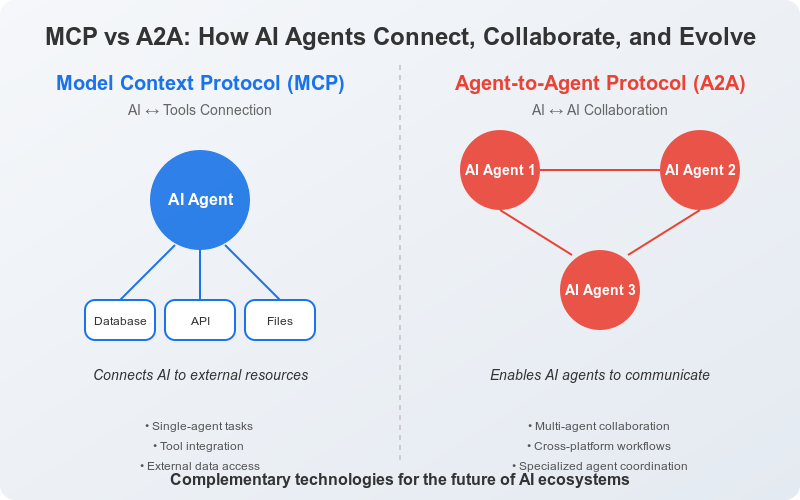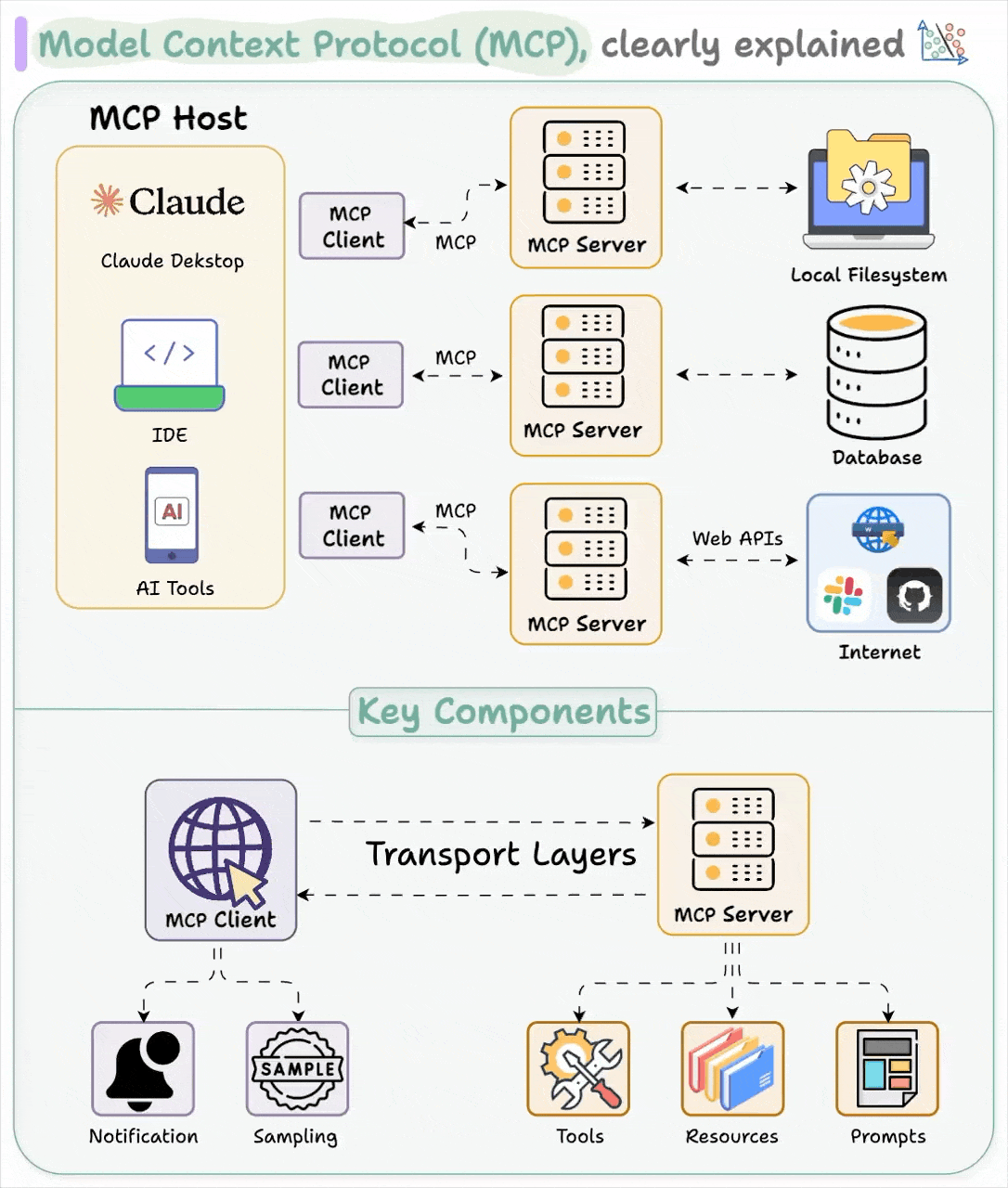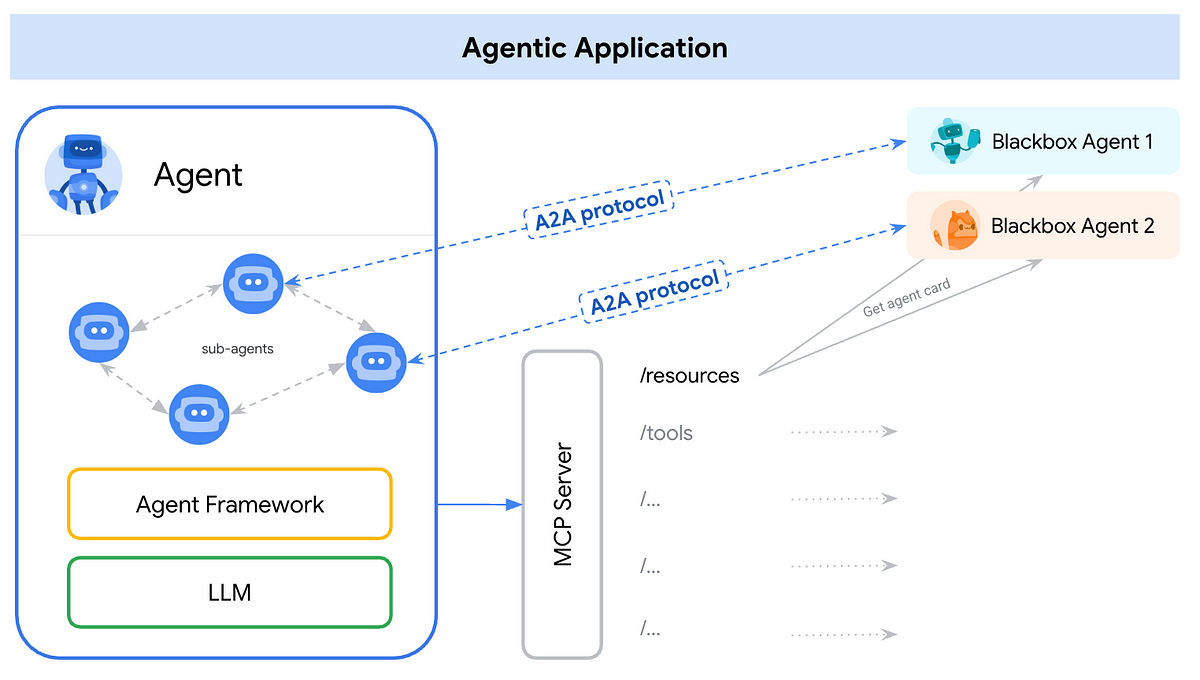The Agent2Agent Protocol (A2A) is an open protocol announced by Google in April 2025, designed to enable seamless communication and interoperability between AI agents, regardless of the underlying framework or vendor.

The Problem A2A Solves
Enterprise AI adoption faces a major hurdle: getting agents built on different frameworks and vendors to work together effectively. A2A creates a standardized way for these diverse agents to communicate and collaborate.
The A2A Solution
A2A provides a common language for agents to discover each other's capabilities, negotiate user experience elements, and work together securely, regardless of which framework or vendor they were built on.
A2A Design Principles
- Embrace agentic capabilities: Focus on enabling natural collaborative workflows
- Build on existing standards: Uses HTTP, SSE, JSON-RPC
- Secure by default: Enterprise-grade authentication and authorization
- Support for long-running tasks: Real-time feedback and state updates
- Modality agnostic: Supports various formats including audio and video
Key Components of A2A
Agent Card
A public metadata file that describes an agent's capabilities, skills, endpoint URL, and authentication requirements. Used for agent discovery.
Task Management
The communication between agents is task-oriented, with a defined lifecycle. Tasks can be completed immediately or remain active for extended periods.
UX Negotiation
Agents can negotiate the correct format for content, explicitly including negotiations about user interface capabilities.

With support from over 50 technology and service partners including Atlassian, Box, Cohere, Intuit, Langchain, MongoDB, PayPal, Salesforce, SAP, and ServiceNow, A2A is positioned to become a crucial standard for agent interoperability in enterprise environments.









